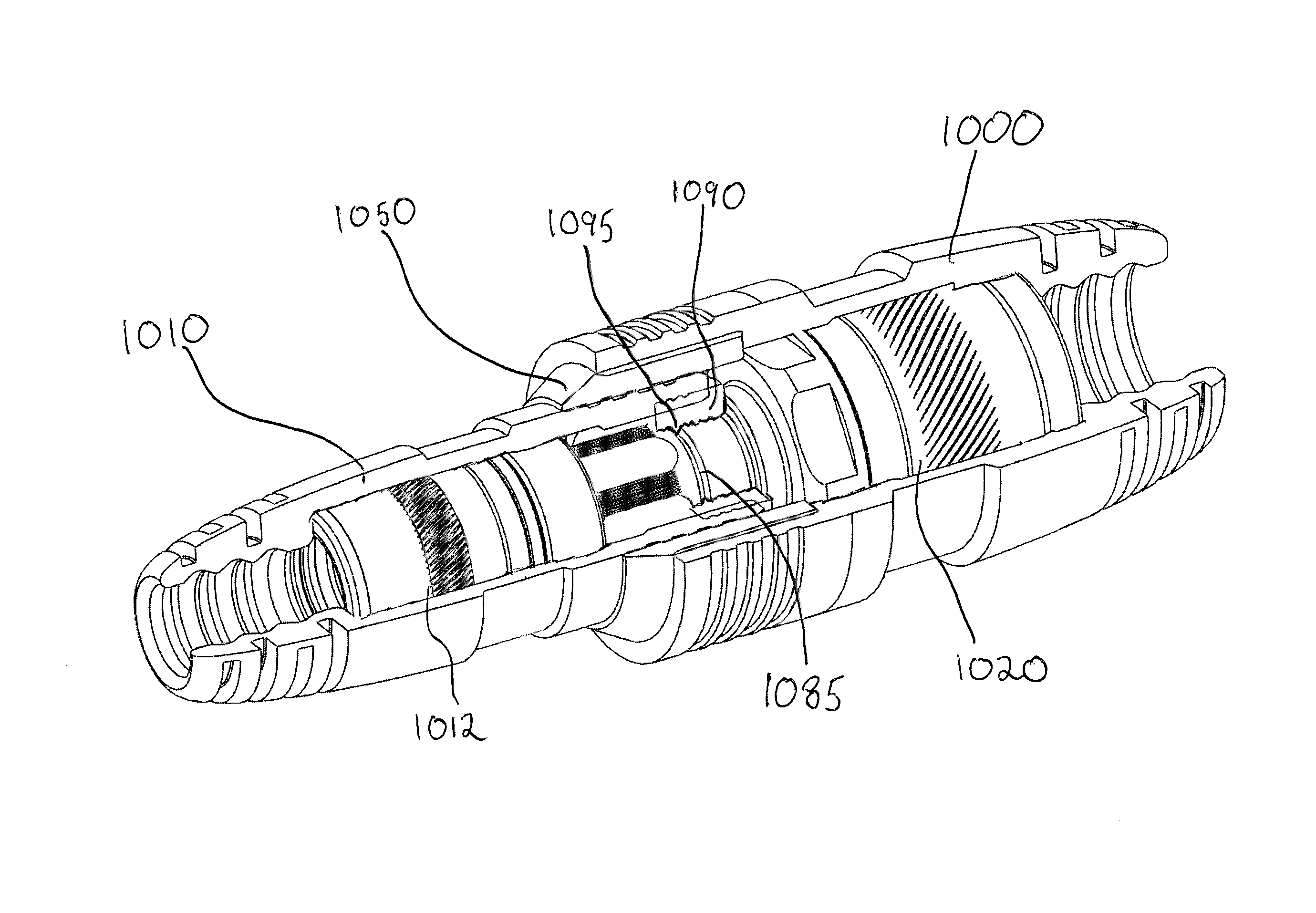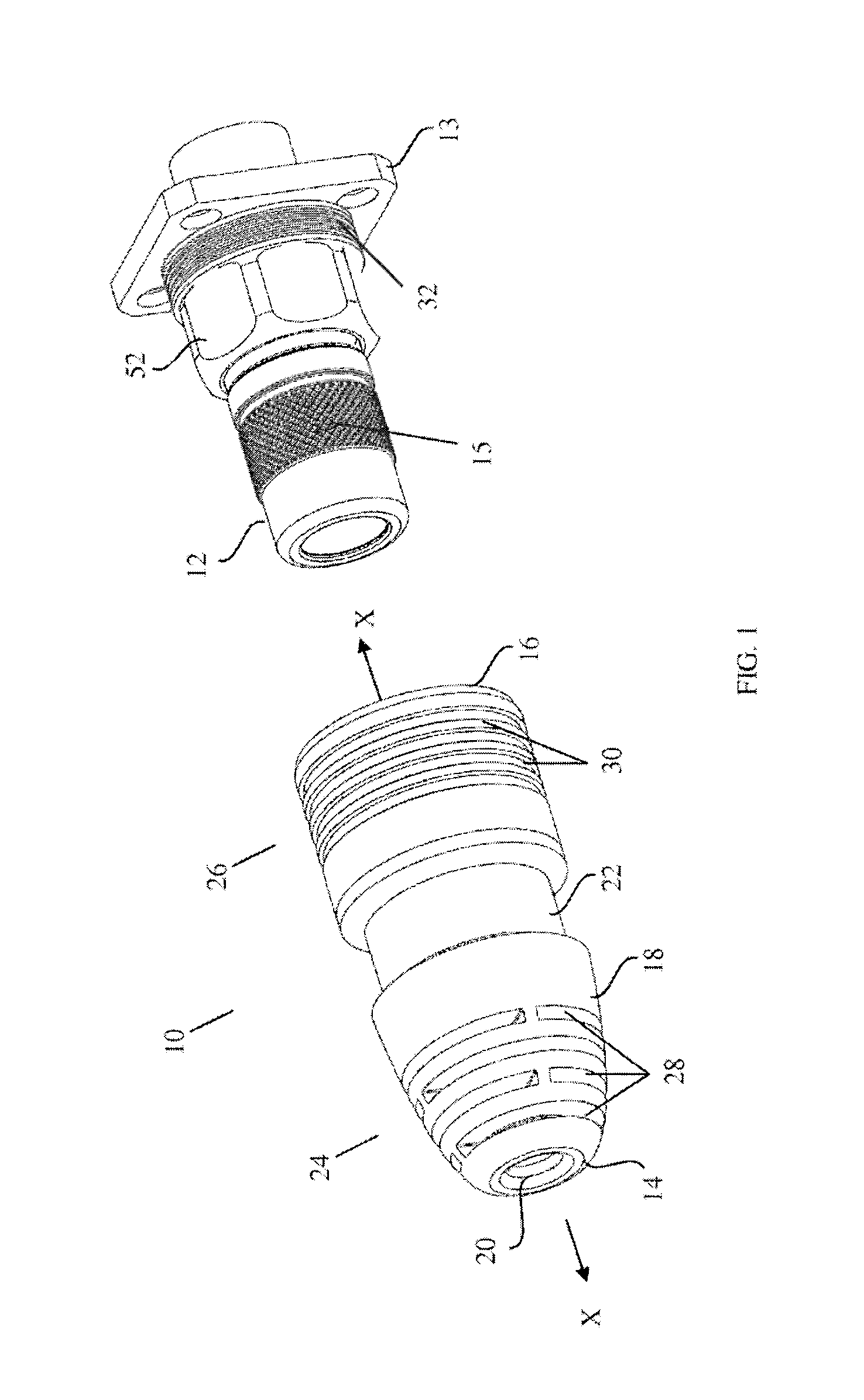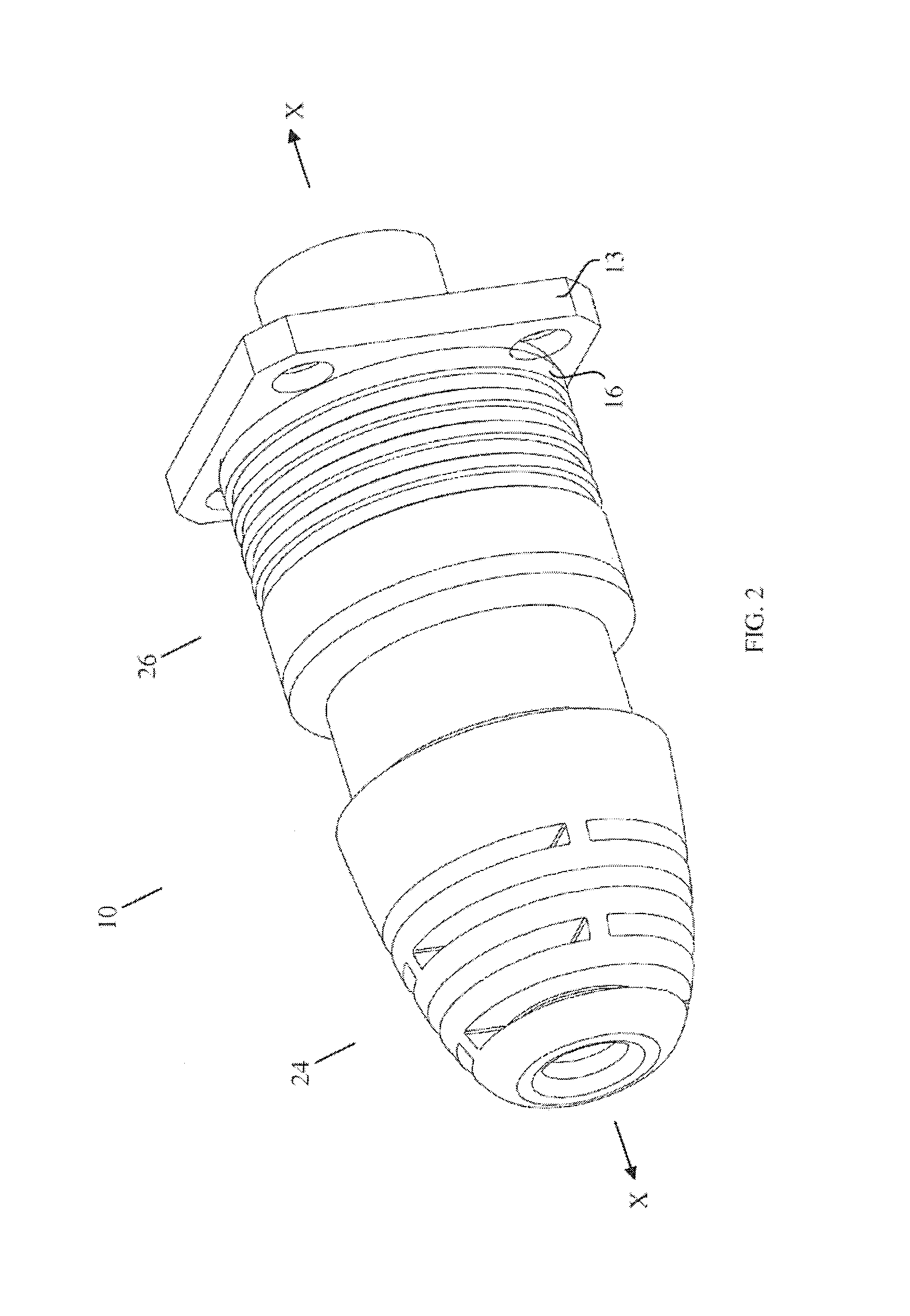Cover for cable connectors
a technology for cables and connectors, applied in the direction of couplings/cases, coupling device connections, electrical devices, etc., can solve the problems of connectors, signal quality degradation, transmission line components such as connectors,
- Summary
- Abstract
- Description
- Claims
- Application Information
AI Technical Summary
Benefits of technology
Problems solved by technology
Method used
Image
Examples
fifth embodiment
[0056]With further reference to the drawings, FIG. 12 depicts a partially cut-away perspective view of a system of covers 1000 and 1010 for providing cover to cable connections, such as connected cable connectors 1012 and 1020. The system embodiment may include an adaptor 1050, but other means may be utilized to space and seal the embodied covers and cover system. When connector 1012 is connected to connector 1020, there may be an annular depression 1085, or some other reduced-diameter axial length portion located where the external surfaces of the connectors 1012 and 1020 join, so that one portion of the a connector, such as connector 1020 is positioned within a portion of the other connector, such as 1012. The fifth cover embodiment may include a collar 1090, such as an elastomeric annular member having an internal protrusion 1095 configured so as to be located proximate where the connectors 1012 and 1020 join, so as to seal against the connectors. The collar 1090 may be configure...
sixth embodiment
[0059]As further shown with respect to the drawings, FIG. 16 depicts a cross-section view of a system of covers for providing cover to cable connections, such as a connector embodiment 2012 connected to a bulkhead connector port 2013. A cover 2010 may extend about the connector 2012 and a portion of the bulkhead 2013. A collar 2090 may be configured to reside between and form a seal against the cover 2010, the bulkhead connector 2013, and the connector 2012. Embodiments of the connector 2012 may have a coupler 2052 having a blend angle surface 2084. As such, embodiments of the collar 2090 may have a corresponding angled surface 2094. Moreover, a color 2090 may include an internal surface feature 2095 to help facilitate a seal against and between the connector 2012 and the bulkhead connector port. The internal surface feature may itself include angled or curved surfaces configured for mating with and forming a seal against the connected connector components.
PUM
 Login to View More
Login to View More Abstract
Description
Claims
Application Information
 Login to View More
Login to View More - R&D
- Intellectual Property
- Life Sciences
- Materials
- Tech Scout
- Unparalleled Data Quality
- Higher Quality Content
- 60% Fewer Hallucinations
Browse by: Latest US Patents, China's latest patents, Technical Efficacy Thesaurus, Application Domain, Technology Topic, Popular Technical Reports.
© 2025 PatSnap. All rights reserved.Legal|Privacy policy|Modern Slavery Act Transparency Statement|Sitemap|About US| Contact US: help@patsnap.com



